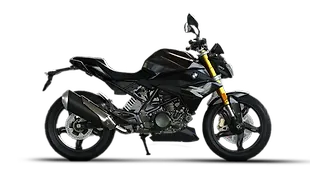Introduction

It seems to be a widely perceived notion that the G310GS has the same DNA as the highly-acclaimed R1250GS running through its veins. While we have ridden the G310GS extensively before and found that it has the potential for light off-road duties, the Bikewale Off-Road Day tests were going to pose different challenges altogether.
We put the baby GS through some serious and functional tests to see how much of the ‘GS’ DNA it possesses.
Test 1: The Walk
Score: 21/30

The whole idea of the walk test is to judge the bike’s balance, throttle input, and clutch modulation while walking alongside. And the BMW G310 GS did a decent job here. Its biggest advantage is its weight and the fact that it is well balanced. While the throttle felt slightly choppy, the clutch was easy to modulate making it quite effortless to manoeuvre the G310 GS through the cones. The only reason the GS lost points was because of its footpegs which kept digging in the side of the boot while walking.
Test 2: The Braking
Score- 19/30

Braking on dirt can be scary and dangerous if not done right. But the dog on the trail or the cow in the forest couldn’t care less, right? And all you can do is jab both the brakes praying it halts. Imagining ourselves in a similar situation doing 60kmph, we jabbed both brakes to bring the motorcycle to a complete stop and see how it behaves. To begin with, the G310 GS lacks front brake feel. Next is the soft front suspension which is non-adjustable. Under hard braking, the G310 GS’s nose dives alarmingly giving the rider a sense that the front end will wash out, which is anything but confidence-inspiring.
Test 3: The Slow Slalom
Score- 18/30

The slow slalom test is similar to the walk test, only with the rider on-board instead of walking alongside. Also, the distance between the cones was much smaller to properly test the balance of the motorcycle. Again, throttle and clutch modulation is important here. But unlike the walk test, the clutch was extremely difficult to modulate which meant that the motorcycle kept stalling, even throwing me off once. Moreover, the G310 GS comes with a low handlebar making it uncomfortable to stand up and ride.
Test 4: The Log Hop
Score- 21/30

Smaller and lighter motorcycles are easier to jump off obstacles than bigger bikes. Now the G310 GS is not only light, but the 313cc single-cylinder motor also has good grunt to have it jump off the log and give some air time. So there shouldn’t be an issue, right? Well, one hitch is the soft suspension which bottomed out each time it hit the log. The other again, is the standing ergonomics on the G310 GS which, combined with the soft suspension, means fewer jumps and even lesser air time.
Test 5: The Cornering
Score- 20/30

Suspension hardware and setup is one of the most vital components in an adventure touring motorcycle. And this also applies while cornering. On the G310 GS, there is loads of power to exploit in low to mid-range, and only a slight twist of the throttle gets the tail pointing outwards. The only problem lies in the suspension, again. The soft setup leaves the bike feeling unsettled and weaving through corners.
Conclusion
Overall Score: 99/150
Final ranking- 6/6

The combined score of both the riders has placed the BMW G310 GS in the sixth place. The bike with its soft suspension setup, issues with stalling and slightly uncomfortable standing ergonomics forced it to be pushed back on the scoreboard. The G310 GS was never meant to be an all-out off-road motorcycle like its bigger sibling. Rather, it is built to be a good touring motorcycle that can get through patches of broken roads and undulations, if needed.

![BMW G310GS [2018-2019] Image BMW G310GS [2018-2019] Image](https://imgd.aeplcdn.com/272x153/bw/models/bmw-g310gs.jpg?20190103151915&q=80)

























